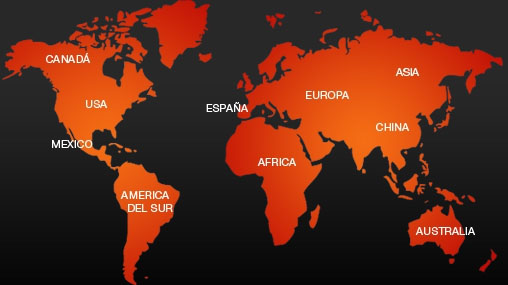- Inicio Acerca de RM Minerales
- Galería de fotos Blog RM Contacto
- Microscopia e instrumentos Pedidos Aviso legal
Copyright 2010-2025
www.rosellminerals.com



A medio camino entre Granada y Jaén, en el límite norte de la provincia granadina, se halla la población de Montejícar. Esta zona es conocida entre los coleccionistas de minerales por los excelentes cuarzos, entre ahumados a moriones, biterminados y con las caras de prisma muy poco desarrolladas, lo que les da un característico aspecto bipiramidal. Se encuentran estos ejemplares en yesos bandeados y margas del Trias en facies Keuper característico del entorno del Cortijo Cañadas, en el N del término municipal de Montejícar. En la zona hay diversos hornos de yeso, hoy en ruinas.
A medio camino entre Granada y Jaén, en el límite norte de la provincia granadina, se halla la población de Montejícar. Esta zona es conocida entre los coleccionistas de minerales por los excelentes cuarzos, entre ahumados a moriones, biterminados y con las caras de prisma muy poco desarrolladas, lo que les da un característico aspecto bipiramidal. Se encuentran estos ejemplares en yesos bandeados y margas del Trias en facies Keuper característico del entorno del Cortijo Cañadas, en el N del término municipal de Montejícar. En la zona hay diversos hornos de yeso, hoy en ruinas.
A medio camino entre Granada y Jaén, en el límite norte de la provincia granadina, se halla la población de Montejícar. Esta zona es conocida entre los coleccionistas de minerales por los excelentes cuarzos, entre ahumados a moriones, biterminados y con las caras de prisma muy poco desarrolladas, lo que les da un característico aspecto bipiramidal. Se encuentran estos ejemplares en yesos bandeados y margas del Trias en facies Keuper característico del entorno del Cortijo Cañadas, en el N del término municipal de Montejícar. En la zona hay diversos hornos de yeso, hoy en ruinas.
Nutrido grupo de cristales escalenoédricos de calcita, apuntados, translúcidos, de buen tamaño y de una localidad clásica andaluza. Poco habitual. Bajo la luz ultravioleta presentan una fluorescencia rojo-rosácea muy destacable.
Grupo de cristales de cuarzo azul, brillantes, algunos formando grupos complejos y otros aislados, biterminados. Muestan prismas cortos junto con desarrolladas caras romboédricas terminales. Intenso color azul gris debido a inclusiones del amfíbol. La matriz se halla recubierta de fibras de magnesio-riebeckita. Muy estético ejemplar.
Estos ejemplares de hematites proceden de antiguos hallazgos (años 80) en una mina sita en los terrenos del cortijo Piquín. En este ejemplar, de buen tamaño, podemos ver un estético agregado botroidal, con un brillo excepcional. Incluso se observan cavidades botroidales "negativas", hacia el interior. En las zonas de fractura se ponen de manifiesto los agregados fibrosos radiales que forman los botrioides. Una pieza de calidad sin igual y muy difícil de encontrar hoy día.
Drusa de cristales trapezoédricos de andradita de esta localidad clásica española. Intenso brillo, con colores entre el marrón al rojizo. Se trata de una granatita con epidota. Se trata de un ejemplar con pedigrí de la colección Gustav Beck.
Muy estética formación estalactítica-botroidal de goethita, con cierta iridiscencia. Este ejemplar no presenta esos colores vistos en los ejemplares de esta localidad ya que no ha sido descascarillado manualmente. Se presenta en la forma original con la que aparece en el yacimiento, hoy día agotado.
Grupo de cristales de almandino, facetado, con formas del dodecaedro y aristas redondeadas. Parcialmente recubiertos por la mica dorada original. Un clásico de la mineralogía española muy difícil de ver hoy día.
Ejemplar casi flotante de cristales tabulares de barita en crecimiento paralelo, en forma de libro, muy brillantes, transparentes y facetados. Entre incoloros a ligeramente grisàceos debido a inclusiones. Procede de una localidad muy poco representada en colecciones.
Cristal de almandino, muy facetado y de gran tamaño, con formas del dodecaedro y aristas redondeadas. Muy limpio y definido. Un clásico de la mineralogía española muy difícil de ver hoy día.
Cristal de almandino de buen tamaño, facetado, con formas del dodecaedro y aristas redondeadas. Se halla parcialmente recubierto de mica. Presenta moldes de contacto con otros cristales con los que se desarrolló. Una pieza antigua, un clásico de la mineralogía española, muy difícil de ver hoy día.
Cristal de almandino, muy facetado, con formas del dodecaedro y aristas redondeadas. Un clásico de la mineralogía española muy difícil de ver hoy día.
Drusa de pequeños cristales de torbernita que forman rosetas de cristales tabulares de color verde.
Nutrido grupo de cristales de pirita goethitizada recubierta de limonita de esta localidad clásica española. Cristales definidos, interpenetrados y del color anaranjado. Un ejemplar de buen tamaño.
Vistos agregado globular de cristales de prehnita, bien dispuestos sobre la matriz tapizada de agujas de posible actinolita, con un color verde con tintas amarillentas. Translúcido y brillante. Una pieza muy estética de esta famosa cantera.
Ejemplares muy curiosos formados por numerosos cristales prismáticos de yeso selenita, muy transparentes y de tono ligeramente amarillento sobre los que se han depositado pequeños cristales cúbicos de halita, algunos con marcas de crecimiento en tolva, brillantes y translúcidos a blancos. Una pieza de neoformación única y muy estética.
Nutrido grupo de cristales prismáticos, algunos casi aciculares, de brochantita de intenso color verde y buen brillo y transparencia. Se disponen en cavidades de la barita. Se enviaran los análisis al comprador.
Nutrido grupo de cristales prismáticos, algunos casi aciculares, de brochantita de intenso color verde y buen brillo y transparencia. Se acompañan de grupos de cristales de aspecto tabular y prisma más grueso de atacamita, fáciles de distinguir, también de intenso color verde y transparencia. Se enviaran los análisis al comprador.
Grupo de cristales de analcima trapezoédricos muy definidos, brillantes y con la transparencia habitual para la especie. Se disponen en una cavidad de roca volcánica tapizada de calcita. Muy interesante ejemplar por su localidad, poco representada en las colecciones.
Grupo de cristales romboédricos de calcita con una compleja combinación que muestran caras definidas y aristas redondeadas. Translúcidos y con un brillo céreo muy curioso. Sobre ellos se disponen diversos glóbulos de prehnita formados por crecimientos radiales. Una curiosidad mineralógica muy poco habitual.
Agregados globulares de cristales de prehnita de color verde, con las caras terminales de los cristales muy definidas y muy brillantes, lo que no es nada habitual en los ejemplares de este yacimiento. Se observa la estructura radial de los agregados en un glóbulo seccionado. La cantera se halla cerrada actualmente.
Nutrido grupo de cristales de siderita de una localidad extinta como es el Túnel del Arteal. Se presenta como agregados de cristales lenticulares con crecimientos interpenetrados, muy brillantes y de intenso color marrón. Con una segunda generación de pequeños cristales del mimo carbonato. En fractura fresca se observa el color verde de la siderita.
Nutrido grupo de cristales de siderita de una localidad extinta como es el Túnel del Arteal. Se presenta como agregados de cristales lenticulares con crecimientos paralelos, muy brillantes y de intenso color marrón. En fractura fresca se observa el color verde de la siderita. Muy estética.
A principios de 2014, revisando unos ejemplares de la corta Santa Matilde encontramos dentro de algunas cavidades grupos de cristales lanceolados, fibrosos o equidimensionales de tono rosado, beige o incluso blancos, que nos llamaron la atención. Los análisis realizados sobre los mismos nos indicaron que se trataba de fluorcalciorromeíta (Ca,Na)2Sb5+2O6F,OH), con un pequeño porcentaje de oxiplumborromeíta (Pb2Sb2O7, por la presencia de plomo). Ambas especies pertenecen al supergrupo del pirocloro y pertenecen al sistema cúbico. La simetría observada nos puso de manifiesto que se trata de una pseudomorfosis sobre lo que fueron, muy probablemente, cristales de estibnita. Hoy día esta corta está colmatada por tierras y escombros.
En este ejemplar podemos observar varios agregados formados por cristales lanceolados a fibrosos, con brillo, tono beige a blanquecino y acompañados de estéticos cristales de barita. Esta es la primera cita del mineral en la Península Ibérica. Se enviarán los análisis (SEM-EDS-DRX) al comprador.
